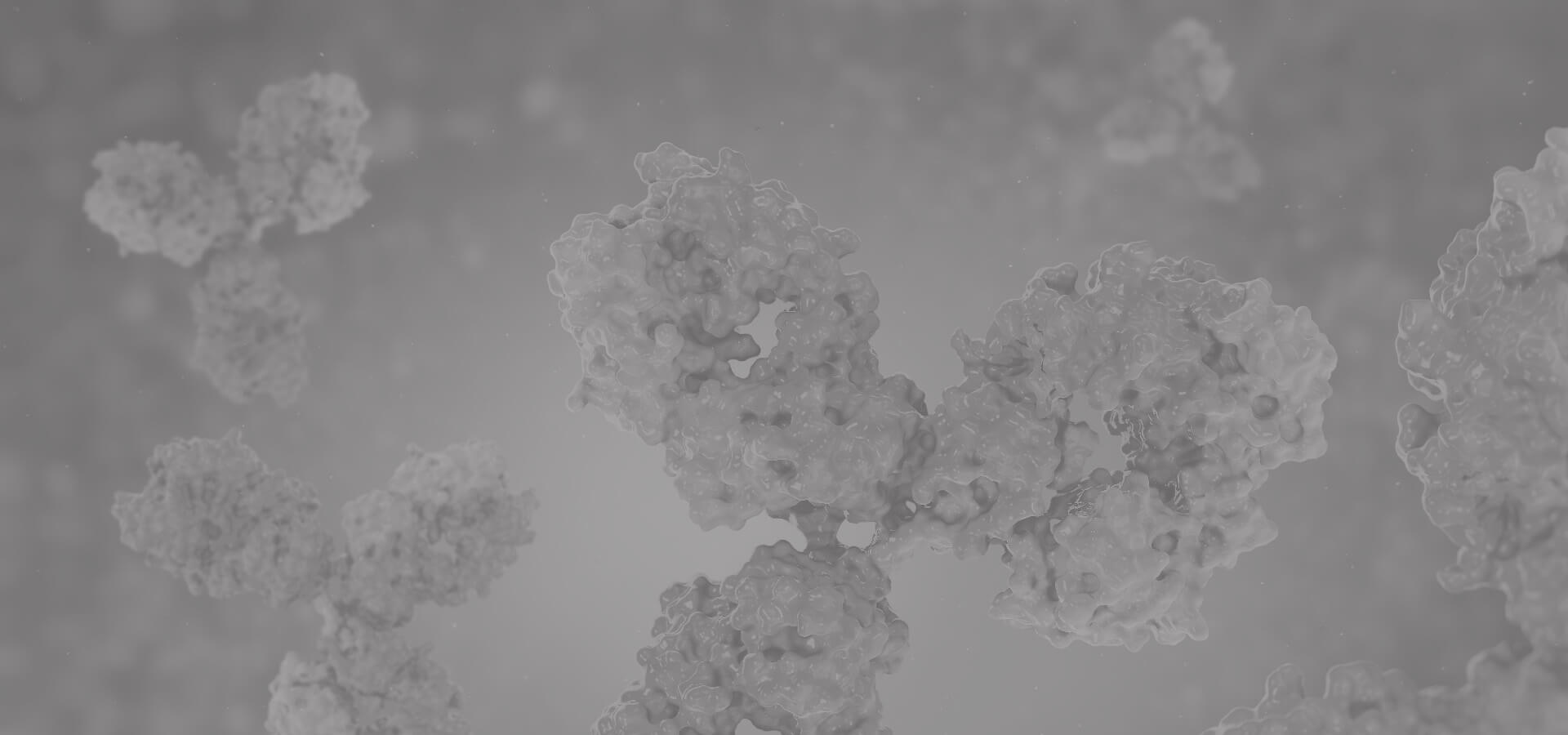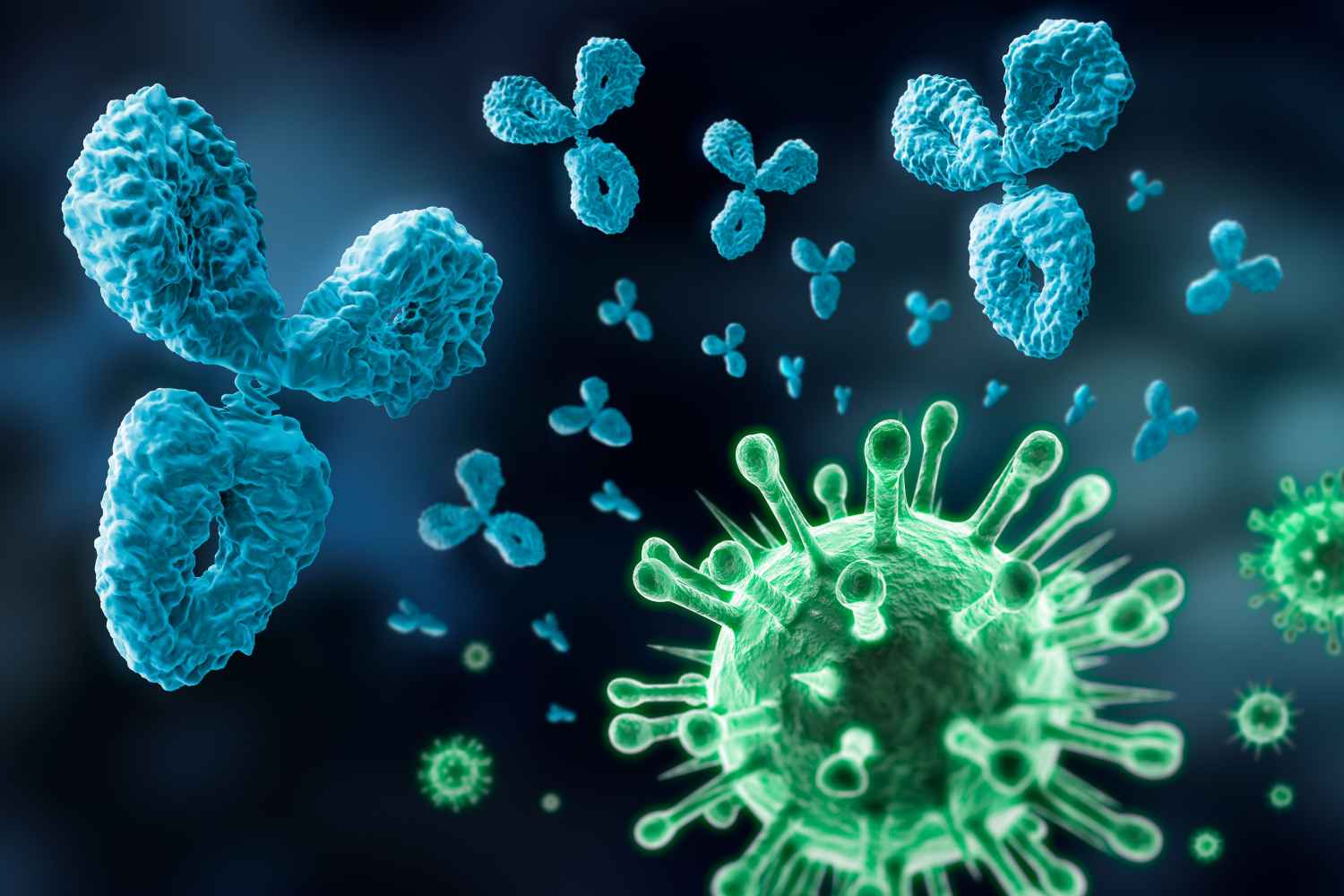FN1 Antibodies
Background
Fibronectin encoded by the FN1 gene is a high-molecular-weight glycoprotein that is widely present in the extracellular matrix and plasma. This protein plays a core role in key biological processes such as embryonic development, wound repair and cell migration by mediating the interactions between cells and between cells and the matrix. Researchers first discovered the FN1 protein in transformed cells in the 1970s. Its molecular structure is characterized by a dimer composed of repeated amino acid modules, containing multifunctional domains that specifically bind to collagen, fibrin and integrin. In-depth research on fibronectin not only reveals the molecular mechanism of cell adhesion but also promotes the development of cutting-edge fields such as tissue engineering and tumor metastasis, becoming an important model system for understanding the biological functions of extracellular matrix.
Structure of FN1
Fibronectin encoded by the FN1 gene is a high-molecular-weight glycoprotein with a molecular weight of approximately 550 kDa. This protein is composed of two approximately identical subunits linked by a disulfide bond at the C-terminal and is highly conserved across different species.
| Species | Human | Mouse | Bovine |
| Molecular Weight (kDa) | 550 | 540 | 545 |
| Primary Structural Differences | Contains Type III duplicate domains | 93% homology to humans | Highly conservative structure |
Fibronectin is composed of multiple repetitive amino acid modules and mainly includes three types (types I, II, and III). Its tertiary structure presents an extended flexible conformation and binds to integrins through the arginine-glycine-aspartic acid (RGD) sequence. The type II domain of this protein is responsible for interacting with extracellular matrix components such as collagen, while the heparin-binding domain mediates the binding to heparan sulfate proteoglycans. This multi-domain property enables fibronectin to simultaneously connect cell surface receptors and extracellular matrix components, forming a three-dimensional network that provides an adhesion scaffold for cells.
 Fig. 1 Dual Roles of FN1 in Tumorigenesis: Splicing-Dependent Regulation of the p53 Pathway.1
Fig. 1 Dual Roles of FN1 in Tumorigenesis: Splicing-Dependent Regulation of the p53 Pathway.1
Key structural properties of FN1:
- Extended-type structures composed of repetitive amino acid modules
- Contains specific functional domains (such as RGD, heparin binding domains, etc.)
- Through the structure of disulfide bond to form dimers
Functions of FN1
The main function of the protein encoded by the FN1 gene is to mediate the interaction between cells and the matrix. However, it also plays a key role in a variety of physiological processes, including tissue repair and embryonic development.
| Function | Description |
| Cell adhesion | By binding the RGD sequence with integrins, it mediates the stable adhesion of cells to the extracellular matrix. |
| Cell migration | Provide temporary scaffolds for cell movement and guide the directional movement of cells during development and wound healing. |
| Tissue repair | In injury form temporary matrix network, recruit to repair cells and promoting tissue remodeling. |
| Embryonic development | Cell differentiation and histological morphogenesis involved in the process of embryo formation. |
| Blood coagulation | Plasma fibronectin binds to platelets, enhancing cell aggregation during the coagulation process. |
Fibronectin achieves functional diversity through its modular structure: the RGD sequence in the type III repetitive domain is mainly responsible for cell adhesion function, while the heparin-binding domain participates in the matrix assembly process. This multi-domain synergy enables it to simultaneously regulate cellular behavior and maintain the integrity of tissue structure.
Applications of FN1 and FN1 Antibody in Literature
1. Liu, Xinchen, et al. "Regulation of FN1 degradation by the p62/SQSTM1-dependent autophagy–lysosome pathway in HNSCC." International journal of oral science 12.1 (2020): 34. https://doi.org/10.1038/s41368-020-00101-5
The article indicates that in head and neck squamous cell carcinoma (HNSCC), high expression of fibronectin FN1 suggests a poor prognosis. Research has found that autophagy degrades FN1 through the P62-mediated lysosomal pathway, and this mechanism is inhibited in autophagy-deficient cells, indicating that autophagy can regulate FN1 levels and thereby affect the progression of HNSCC.
2. Bhattarai, Prabesh, et al. "Rare genetic variation in fibronectin 1 (FN1) protects against APOEε4 in Alzheimer's disease." Acta neuropathologica 147.1 (2024): 70. https://doi.org/10.1007/s00401-024-02721-1
The article indicates that for elderly people carrying the high-risk gene APOEε4 but not suffering from Alzheimer's disease, the study found that the loss-of-function variation of the FN1 (fibronectin) gene may have a protective effect. This variation can reduce the abnormal deposition of FN1 in the cerebral blood vessels, thereby alleviating neuroinflammation and improving the clearance of toxic proteins, ultimately delaying or lowering the risk of disease.
3. Chen, Tianyi, et al. "Sphingosine-1-phosphate derived from PRP-Exos promotes angiogenesis in diabetic wound healing via the S1PR1/AKT/FN1 signalling pathway." Burns & Trauma 11 (2023): tkad003. https://doi.org/10.1093/burnst/tkad003
Studies have found that S1P (PRP-Exos-S1P) in platelet-rich plasma exosomes can regulate the expression of fibronectin (FN1) by activating S1PR1, thereby promoting angiogenesis and wound healing in diabetic mouse models. This indicates that FN1 is a key downstream factor in this pro-healing signaling pathway.
4. Xu, Houshi, et al. "Single-cell RNA sequencing identifies a subtype of FN1+ tumor-associated macrophages associated with glioma recurrence and as a biomarker for immunotherapy." Biomarker Research 12.1 (2024): 114. https://doi.org/10.1186/s40364-024-00662-1
This study found a significant increase in a type of FN1-positive tumor-associated macrophages (FN1+ TAMs) in recurrent glioma. This cell subpopulation is enriched in hypoxic regions and is associated with shortened recurrence intervals and poor prognosis in patients. It promotes recurrence by shaping an immunosuppressive microenvironment and is expected to become a new therapeutic target and prognostic marker.
5. Wang, Han, et al. "FN1 is a prognostic biomarker and correlated with immune infiltrates in gastric cancers." Frontiers in oncology 12 (2022): 918719. https://doi.org/10.3389/fonc.2022.918719
The article indicates that in gastric cancer, FN1 is highly expressed in tumor tissues and is associated with a poor prognosis. Research has found that FN1 is closely related to tumor immune infiltration, especially the infiltration of M2-type macrophages, indicating that it becomes a potential prognostic marker by influencing the tumor immune microenvironment.
Creative Biolabs: FN1 Antibodies for Research
Creative Biolabs specializes in the production of high-quality FN1 antibodies for research and industrial applications. Our portfolio includes monoclonal antibodies tailored for ELISA, Flow Cytometry, Western blot, immunohistochemistry, and other diagnostic methodologies.
- Custom FN1 Antibody Development: Tailor-made solutions to meet specific research requirements.
- Bulk Production: Large-scale antibody manufacturing for industry partners.
- Technical Support: Expert consultation for protocol optimization and troubleshooting.
- Aliquoting Services: Conveniently sized aliquots for long-term storage and consistent experimental outcomes.
For more details on our FN1 antibodies, custom preparations, or technical support, contact us at email.
Reference
- Liu, Mian, et al. "FN1 shapes the behavior of papillary thyroid carcinoma through alternative splicing of EDB region." Scientific Reports 15.1 (2025): 327. https://doi.org/10.1038/s41598-024-83369-5
Anti-FN1 antibodies
 Loading...
Loading...
Hot products 
-
Mouse Anti-CCL18 Recombinant Antibody (64507) (CBMAB-C7910-LY)

-
Mouse Anti-dsDNA Recombinant Antibody (22) (CBMAB-AP1954LY)

-
Mouse Anti-CALR Recombinant Antibody (CBFYC-0763) (CBMAB-C0818-FY)

-
Mouse Anti-ARSA Recombinant Antibody (CBYC-A799) (CBMAB-A3679-YC)

-
Rat Anti-(1-5)-α-L-Arabinan Recombinant Antibody (V2-501861) (CBMAB-XB0003-YC)

-
Mouse Anti-BACE1 Recombinant Antibody (61-3E7) (CBMAB-1183-CN)

-
Mouse Anti-ALB Recombinant Antibody (V2-55272) (CBMAB-H0819-FY)

-
Mouse Anti-ACLY Recombinant Antibody (V2-179314) (CBMAB-A0610-YC)

-
Mouse Anti-ACTN4 Recombinant Antibody (V2-6075) (CBMAB-0020CQ)

-
Mouse Anti-BCL6 Recombinant Antibody (CBYY-0435) (CBMAB-0437-YY)

-
Mouse Anti-CCS Recombinant Antibody (CBFYC-1093) (CBMAB-C1150-FY)

-
Mouse Anti-CCDC25 Recombinant Antibody (CBLC132-LY) (CBMAB-C9786-LY)

-
Mouse Anti-APOE Recombinant Antibody (A1) (CBMAB-0078CQ)

-
Mouse Anti-COL12A1 Recombinant Antibody (CBYY-C3117) (CBMAB-C4560-YY)

-
Mouse Anti-CD24 Recombinant Antibody (SN3) (CBMAB-C1037-CQ)

-
Mouse Anti-ALDOA Recombinant Antibody (A2) (CBMAB-A2316-YC)

-
Mouse Anti-NSUN6 Recombinant Antibody (D-5) (CBMAB-N3674-WJ)

-
Human Anti-SARS-CoV-2 Spike Recombinant Antibody (CR3022) (CBMAB-CR014LY)

-
Mouse Anti-BACE1 Recombinant Antibody (CBLNB-121) (CBMAB-1180-CN)

-
Mouse Anti-CD46 Recombinant Antibody (CBFYC-0076) (CBMAB-C0085-FY)

- AActivation
- AGAgonist
- APApoptosis
- BBlocking
- BABioassay
- BIBioimaging
- CImmunohistochemistry-Frozen Sections
- CIChromatin Immunoprecipitation
- CTCytotoxicity
- CSCostimulation
- DDepletion
- DBDot Blot
- EELISA
- ECELISA(Cap)
- EDELISA(Det)
- ESELISpot
- EMElectron Microscopy
- FFlow Cytometry
- FNFunction Assay
- GSGel Supershift
- IInhibition
- IAEnzyme Immunoassay
- ICImmunocytochemistry
- IDImmunodiffusion
- IEImmunoelectrophoresis
- IFImmunofluorescence
- IGImmunochromatography
- IHImmunohistochemistry
- IMImmunomicroscopy
- IOImmunoassay
- IPImmunoprecipitation
- ISIntracellular Staining for Flow Cytometry
- LALuminex Assay
- LFLateral Flow Immunoassay
- MMicroarray
- MCMass Cytometry/CyTOF
- MDMeDIP
- MSElectrophoretic Mobility Shift Assay
- NNeutralization
- PImmunohistologyp-Paraffin Sections
- PAPeptide Array
- PEPeptide ELISA
- PLProximity Ligation Assay
- RRadioimmunoassay
- SStimulation
- SESandwich ELISA
- SHIn situ hybridization
- TCTissue Culture
- WBWestern Blot








